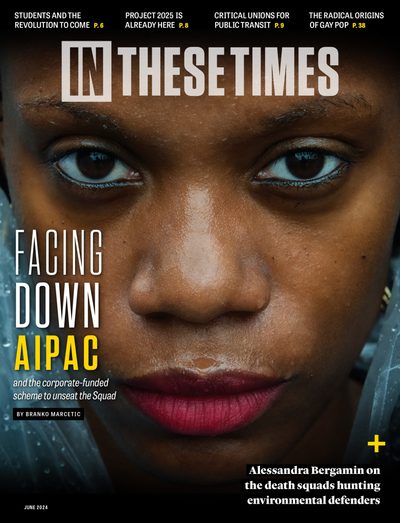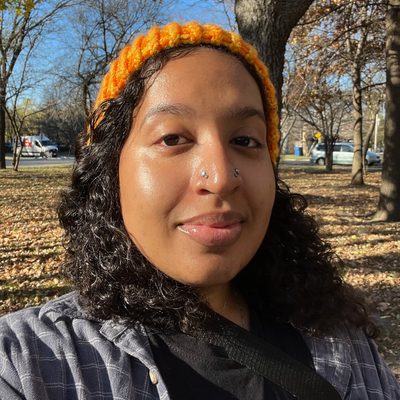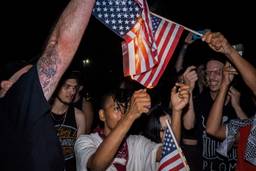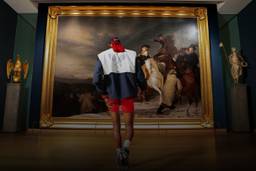No, JoJo Siwa Did Not Invent Gay Pop
Let’s not erase the icons that came before us.
Briana L. Ureña-Ravelo
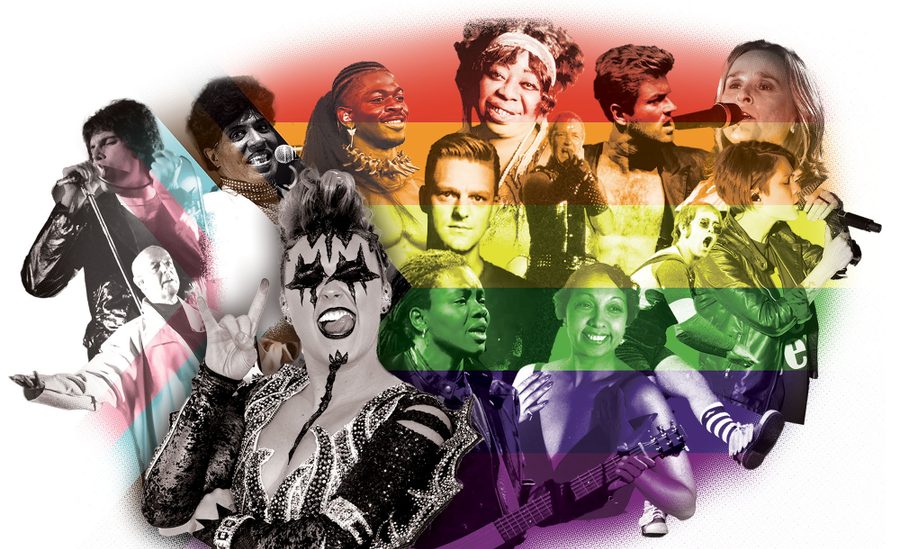
Jojo Siwa, the former Nickelodeon star and honorary fifth member of the band KISS, landed herself in hot water in April after saying she “wanted to start a new genre … called ‘gay pop’ ” during promotions for her new single, “Karma.”
Many people online subsequently pointed out that the 21-year-old Siwa in no way, shape or form created gay pop, as it’s existed for a long time. Siwa later walked back her statement, but the initial declaration marked an attempt from a shining new mainstream artist, who has been a brand for much of her young life, to push a new brand idea to stakeholders. This one butted up against the reality that the genre is actually well-trodden and storied, complete with an ancestrally rich community. Gay pop — and gay dance and club culture overall — arguably traces itself back to the illustrious drag balls of the Harlem Renaissance, flits through the postwar era to the Cold War and Lavender Scare, stemming from Ma Rainey, Little Richard, Sylvester, Erasure, the Pet Shop Boys and so many more. In the underground scenes I frequent, our queercore ancestors include Big Boys, Pansy Division, Team Dresch, Gravy Train, Martin Sorrondeguy of Limp Wrist and Los Crudos.
The point is: We’ve been here.
So what happened in this moment with Siwa? How could a young white cisgender woman even think to lay claim to being the inventor, and then Chief Marketing Officer, of gay pop? Why would the genre, with its community and history, require marketing and a hierarchical structure?
This deservedly belabored faux pas is one rooted in many things. Chief among them is the cultural divide between the demands of capitalism and the queer political communities that have their roots in the margins. Under capitalism, there is no community — just a sound to commodify a marketable demographic.
Queer communities that made the earliest manifestations of gay pop formed on the basis of social and interpersonal proximity, shared identity and political struggle against (and outside of) a white, cis, heteronormative capitalist world. It did not emerge as a market, or as a branded attempt at a novel, individual idea created from the ether by a brand to maximize attention and profits, but as a counter to both. In these countercultural spaces, we have shared a varied history, language, dress, rules, calling cards, spaces, dance moves and, yes, music.
Harlem, even before the renaissance of the 1920s and 1930s, was known as a destination for queer people. Harlem’s Black queer enclaves were resplendent with gay pageants and masquerades, the ancestors to modern day ball culture. Born out of necessity and creativity, these underground spaces kept marginalized people from the eye of the police and normative straight, cisgender, white society. Queer culture couldn’t be traditionally marketed or sold because so much of what they were doing was frowned upon or straight up illegal; it was truly community and art for the sake of community and art.
The issue with Siwa isn’t about an affront to intellectual property, the idea that she must formally credit someone every time she speaks. The issue is that gay pop isn’t a brand, and it doesn’t exist in a vacuum: Entire thriving scenes have come and gone and been reborn long before Siwa was even a twinkle in her mother’s eye, and those who came before her deserve to be properly respected. This disconnect is arguably what makes Siwa’s rebrand so mediocre. It is a highly stylized, contrived attempt at mainstream queer bait. Despite Siwa’s attempts at edginess, it is sanitized of any subversion or cohesion, speaking to no ancestry beyond just hopes for a hit with the gay community — and it isn’t even fun to dance to (we queer folk can forgive a lot if a song is at least fun to dance to). During her PR push for her single and image makeover, Siwa mentioned known and storied cultural appropriator Elvis as her inspiration. This absolutely resonates with the theme of pretending something that has been pioneered by Black people, and working class communities of color in particular, was instead created by an “innovative” industry-planted white person.
Queer folks and the music we make are a large umbrella, and I do not deign to speak for, agree with, love or even like every artist or faction that falls under that overarching label; queer folks aren’t a monolith. Though there have been plenty of mainstream (often white, cisgender and straight) artists who exploit corners of the queer community for their gain — such as Madonna, whose 1990 song “Vogue” completely appropriates the dance style pioneered by Black and brown queer youth — what I love most about the queer community is our resistance to commodification by the privileged and powerful. It is by the underground, for the underground. We meet in lofts and warehouses and basements where we shouldn’t be and scream and sing and dance our hearts out before the cops come. We break the law and then some. We resist and stand in solidarity with one another, and resist the co-opting of our spaces by capitalists, cops, Zionists and gentrifiers.
So as someone who has lived as and been treated as a brand her whole life, and who may not be connected to these long, storied, collective histories of queer culture, Siwa could of course imagine she is creating a genre that has already existed in some form for over a hundred years.
It is an honor to tap into queer ancestries. We are a community of artists and originators, and we all want to bring something new to the table, shake things up and push against the status quo, even if it means we must share spaces filled with people who are against doing exactly that. But we are also proud to recognize and call back to those we come from and share these spaces with them artistically.
Queer radical ancestries inform us that we do not live in isolated silos. We may be individuals yet, but not so much unique; rather, we are influenced by and born from legacies. As opposed to this heritage making us panic or feel like we have to invent something new to stand apart, it gives us pride to be part of a rich tapestry that roots far back in history before us and will bloom long after we are gone. Our queerness, then, is about adding to the tapestry, participating in the cycle and traditions, even as we are also bringing fresh and new perspectives to help break the mold, fine tune or even do away with more antiquated or restrictive rules and traditions of the past.
We are not recreating the wheel, but stitching ourselves into the rich blanket of our people.
Briana L. Ureña-Ravelo is an educator, organizer, cultural critic and semi-retired punk scenester from Michigan, currently based in the West Side of Chicago. Her interests include the Midwest, Afro-Latine culture and history, Black and Indigenous resistance and futures, abolition, sweets, DIY music scenes and her cat.
